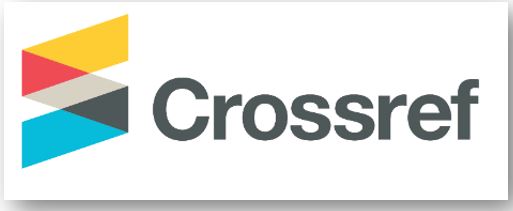Analysis of Language Politeness in English Learning at X IPA MA Raudlatul Ulum Klampis.
DOI:
https://doi.org/10.61231/jie.v2i2.317Keywords:
Politeness Strategies, Brown and Levinson Theory, Language PolitenessAbstract
This study aims to determine the politeness of students' language in learning English in class X IPA MA Raudlatul Ulum Klampis. This study uses triangulation of theory and sources, and data analysis is carried out using data tabulation techniques, followed by data presentation, interpretation, and conclusions. The results of the study show that the form of politeness in the interaction of teachers with students and between students in English learning discussion activities in the MA Raudlatul Ulum class. The results of the data analysis and subsequent discussion contribute to the academic understanding of politeness and provide practical implications for effective communication in the English learning process, providing the audience with valuable insights that can be directly applied in the classroom.
References
Afriana, A., & Mandala, R. S. (2018). Kesantunan Berbahasa Pada Pembelajaran Mahasiswa Universitas Putera Batam. Jurnal Basis, 5(2), 43. https://doi.org/10.33884/basisupb.v5i2.777
Asysyifa, F., Djatmika, & Syukri, H. (2023). Strategi Kesantunan Berbahasa Dalam Animasi Berbahasa Arab Fawwaz Wa Nuroh (Pendekatan Pragmatik). Dinamika Dan Tantangan Kajian Linguistik Dan Sastra, 75–82.
Basari, M. H., & Sauri, S. (2021). MANAJEMEN KESANTUNAN BERBAHASA DALAM PEMBELAJARAN BAHASA INGGRIS DI SEKOLAH (Penelitian Pada PBM Bahasa Inggris di kelas X MIPA-3 SMAN 27 Bandung). Tarbiyatuna?: Kajian Pendidikan Islam, 5(1), 102. https://doi.org/10.29062/tarbiyatuna.v5i1.497
Fadhallah, U. P. (2020). Books @ Books.Google. Co.Id. In Hukum Perumahan (p. 2). https://books.google.co.id/books?id=t3zPqTnRjX0C&dq=wrong+diet+pills&source=gbs_navlinks_s
Fitriyah. (2020). Kesantunan berbahasa dalam wacana kelas pembelajaran bahasa inggris. 1–342.
Magdalena, I., Sundari, T., Nurkamilah, S., Ayu Amalia, D., & Muhammadiyah Tangerang, U. (2020). Analysis Bahan Ajar. Jurnal Pendidikan Dan Ilmu Sosial, 2(2), 311–326. https://ejournal.stitpn.ac.id/index.php/nusantara
Mahmudi, A. G., Irawati, L., & Soleh, D. R. (2021). Kesantunan Berbahasa Siswa dalam Berkomunikasi dengan Guru (Kajian Pragmatk). Deiksis, 13(2), 98. https://doi.org/10.30998/deiksis.v13i2.6169
MOHAMMED, W. D. (2021). Categorizing Declarative Speech Acts in English – Arabic Political translation?: a Pragmatic Study. Journal of Tikrit University for Humanities, 28(10), 100–116. https://doi.org/10.25130/jtuh.28.10.2021.24
Nahsruddin, & Al-Obaydi, L. H. (2021). Linguistics politeness in reinforcing character during learning activities. Ethical Lingua: Journal of Language Teaching and Literature, 8(1), 210-217.
Peng, Y. (2020). A Pragmatic Study of Junior High School Teachers’ Speech Act of Criticism from the Perspective of Politeness Principle. English Language Teaching, 13(4), 11. https://doi.org/10.5539/elt.v13n4p11
Pradita, L. E., Rachmawati, U., Farikah, F., Widyanto, D., Jendriadi, J., & Hananto, I. (2024). Language Politeness in Elementary School Students Learning Activities. JoLLS: Journal of Language and Literature Studies, 4(1), 61–70.
Rika Ningsih, Endry Boeriswati, & Liliana Muliastuti. (2020). Language Politeness of Students and Teachers: an Ethnographic Study. Getsempena English Education Journal, 7(1), 159–169. https://doi.org/10.46244/geej.v7i1.1063
Syahrizal, H., & Jailani, M. S. (2023). Jenis-Jenis Penelitian Dalam Penelitian Kuantitatif dan Kualitatif. Jurnal QOSIM?: Jurnal Pendidikan, Sosial & Humaniora, 1(1), 13–23. https://doi.org/10.61104/jq.v1i1.49
Downloads
Published
How to Cite
Issue
Section
License
Copyright (c) 2024 Karimatul Millah, Mariyatul Kiptiyah , Tera Athena

This work is licensed under a Creative Commons Attribution 4.0 International License.
You are free to:
- Share — copy and redistribute the material in any medium or format for any purpose, even commercially.
- Adapt — remix, transform, and build upon the material for any purpose, even commercially.
- The licensor cannot revoke these freedoms as long as you follow the license terms.
Under the following terms:
- Attribution — You must give appropriate credit , provide a link to the license, and indicate if changes were made . You may do so in any reasonable manner, but not in any way that suggests the licensor endorses you or your use.
- No additional restrictions — You may not apply legal terms or technological measures that legally restrict others from doing anything the license permits.
Notices:
You do not have to comply with the license for elements of the material in the public domain or where your use is permitted by an applicable exception or limitation .
No warranties are given. The license may not give you all of the permissions necessary for your intended use. For example, other rights such as publicity, privacy, or moral rights may limit how you use the material.

















